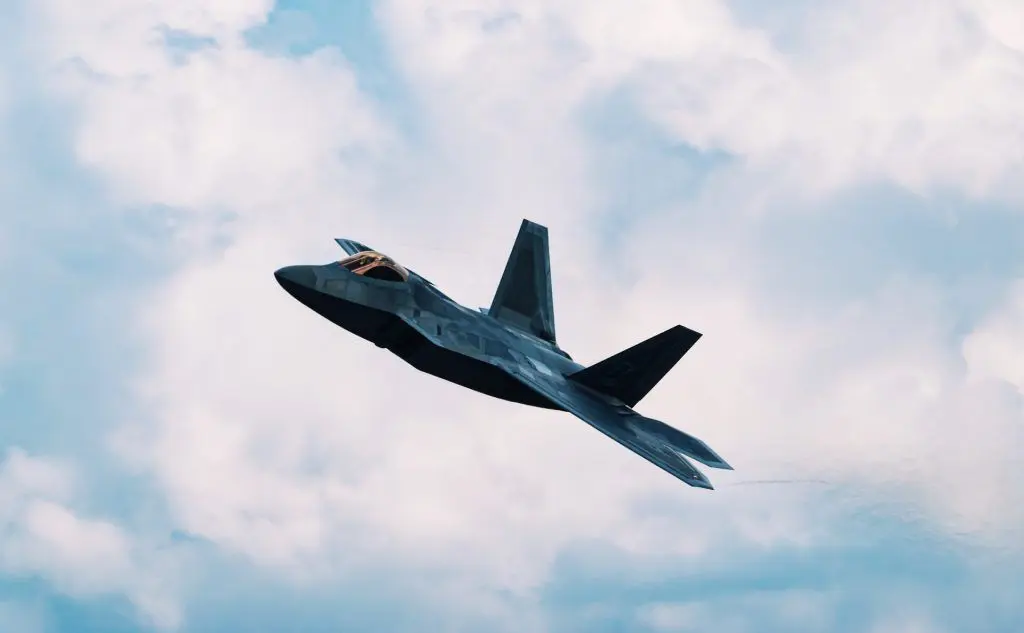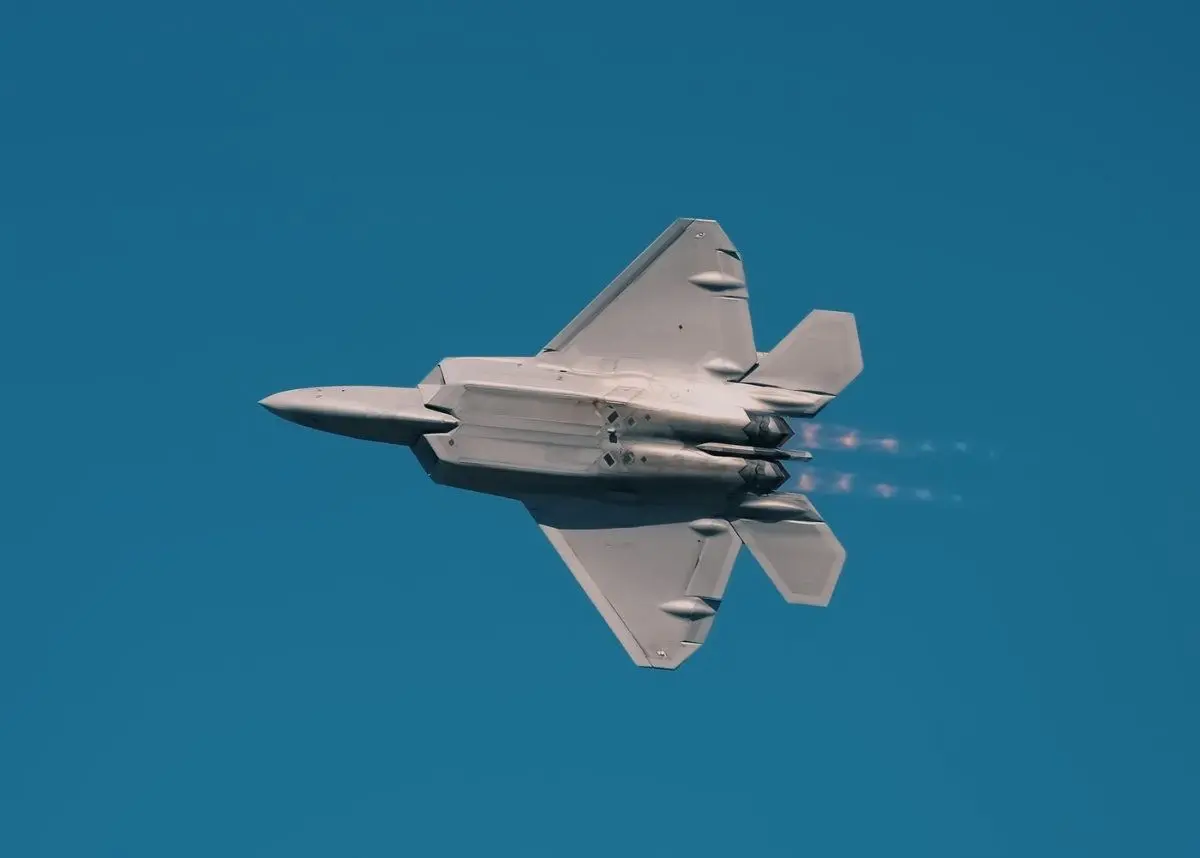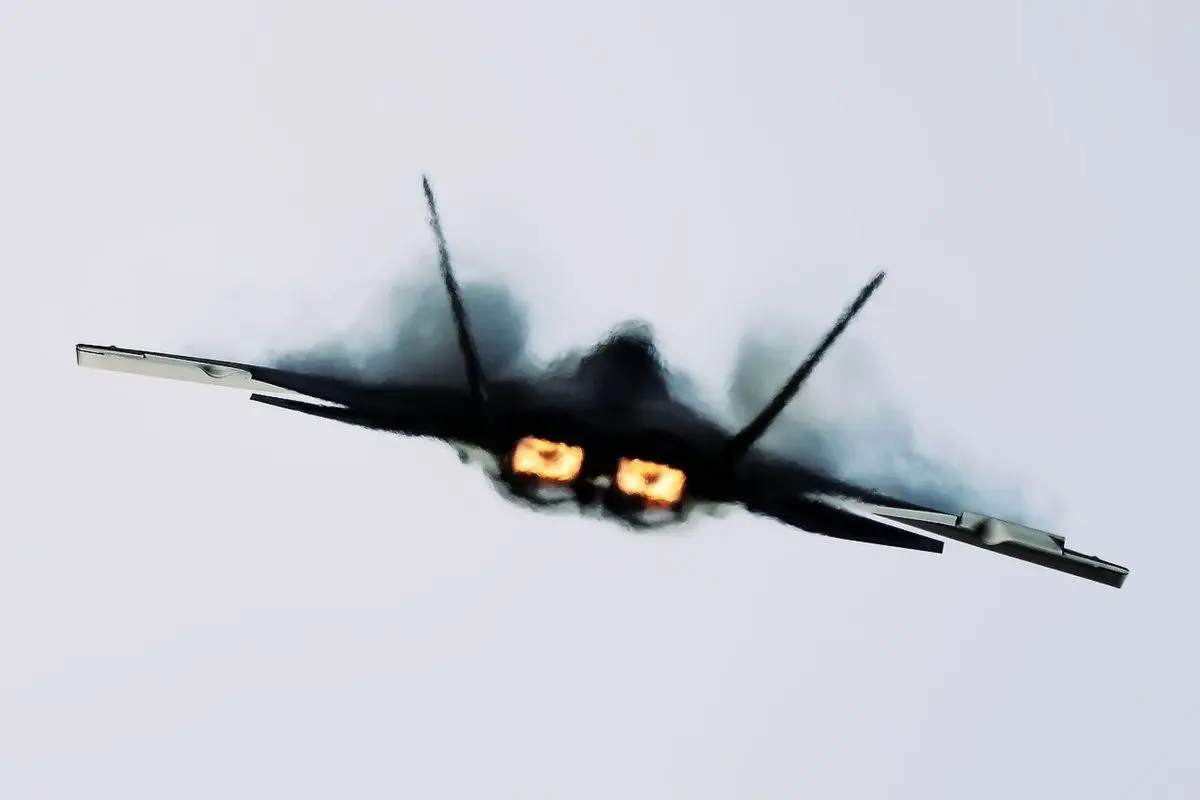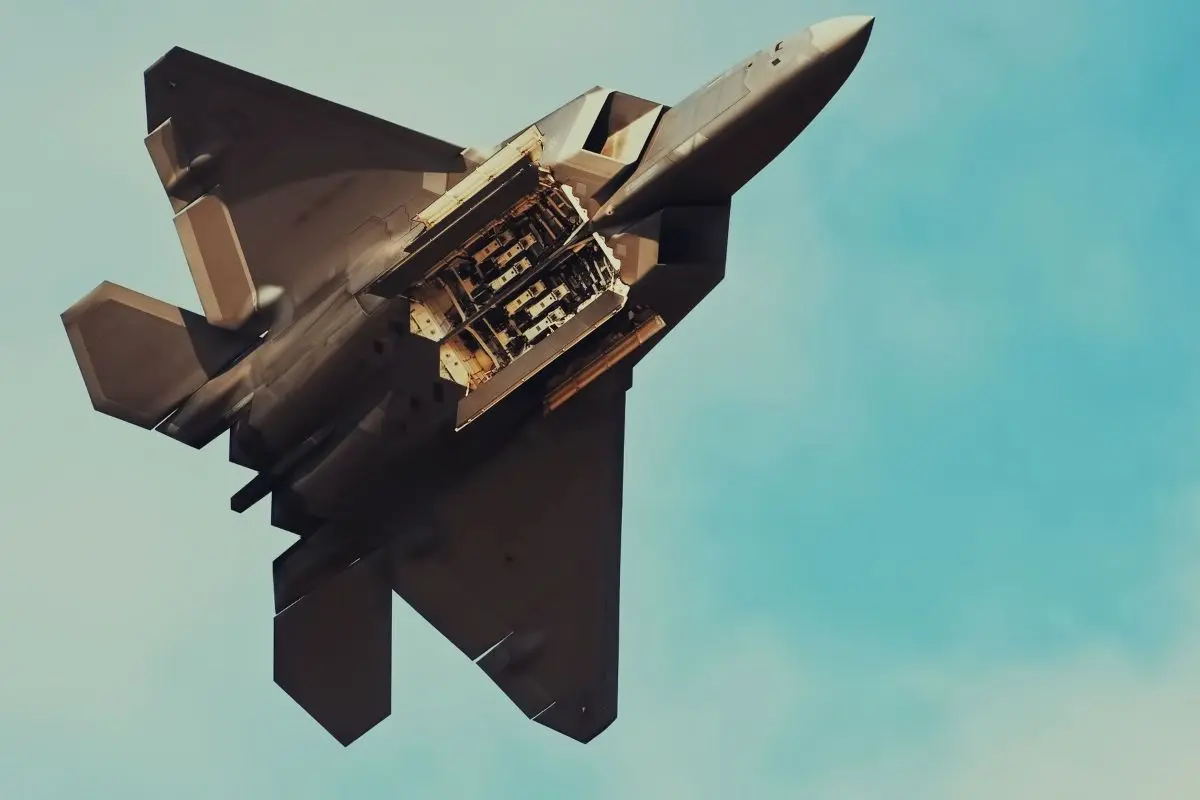
The F-22 Raptor Top Speed And How It Reaches It
Learn how fast the F-22 Raptor is and the technologies behind the high speeds.
Table of Contents
The F-22 Raptor fighter is considered to be the best air superiority aircraft in the world. It is designed to provide total air dominance with little to no compromise. In fact, no current or planned fighter aircraft can match it, and the F-22 Raptor is in fact so good that the USA has banned exports of the aircraft. That leaves the U.S. Air Force as the sole operator.
But what makes the F-22 Raptor so unique? Apart from the stealth technologies, superb agility and highly advanced electronics, the F-22 Raptor is capable of flying with very high speeds. Before we dig into the F-22 top speed and how it reaches it, let’s take a look at why high speed matters for an air superiority aircraft.
Why Jet Fighter Speed Matters
Speed is an essential thing to posses and master for an air superiority fighter such as the F-22 Raptor. And it’s not just for bragging rights.
In combat, high speeds can be the difference between mission succes or failure, or even life and death. It increases the aircraft’s (and of course the pilot’s) survivability against threats from the ground. By going faster than the missile or enemy, the quickest fighter can simply outrun the threat before it gets too close for comfort.
That also works the other way around. Flying at high speeds gives you the upper hand when intercepting threats or reaching a target faster. Both are important edges to have for a jet fighter as it strips away reaction time for the enemy, leaving them with minimal time to respond. In combat, the initiative often goes to the faster participant and this grants more flexibility and freedom to engage or disengage as desired.

What is the F-22 Top Speed?
The Mach 2.25 top speed of the F-22 Raptor means that it is capable of flying over twice as fast as the speed of sound (although the concept of Mach is a bit more complex than that). That’s about 770 m or 2526 ft every second.
Keep in mind that the altitude affect the maximum speed of any airplane. The density of the air closer to sea level is much higher leading to a big increase in air resistance. So even though the F-22 Raptor is capable of reaching Mach 2.25, it would need to climb to higher altitudes to attain it. At sea level the F-22 Raptor would have a max speed of about 1482 km/h or 921 mph. But the Raptor can go to about 65.000 ft where it would achieve that max speed much easier than closer to the ground.
The trade-off is that to climb to such high altitudes, you need to burn a lot more fuel to get there. Thanks to the power of the F-22, you will get there fast though.
What Makes The F-22 Raptor So Fast?
Burning loads of fuel of course! Jokes aside, although it is part of the answer. The F-22 Raptor is capable of reaching its high speeds thanks to two main areas of the aircraft’s design. The powerplant, or engines, and the aerodynamic features of the airframe. Lets take a look.
Engines and Propulsion
The F22-Raptor is equipped with two Pratt and Whitney F119-PW-100 turbofan engines. Each of them delivers 26.000 pounds of force. On top of that, each engine is equipped with an afterburner. This brings the numbers to 35.000 pounds of thrust per engine with the afterburner enabled.
The total amount of thrust produced combined with the vehicle’s weight, gives the F-22 Raptor an outstanding thrust-to-weight ratio of about 1.25 in some configurations (the thrust-to-weigth ratio changes constantly during flight due to throttle settings, vehicle weight changes and other factors).
The great thrust-to-weight ratio means that the F-22 Raptor produces more thrust than it weighs, meaning it can still accelerate when pointing staright up.

Each Raptor engine is equipped with an afterburner. It injects fuel into the exhaust of the jet engine and ignites it to burn the excess oxygen in the exhaust stream. An afterburner is a relatively easy way of boosting the power of an engine. It is especially useful for intercepting threats or dogfighting but an afterburner consumes a lot of extra fuel.
When activated, the extra fuel consumption by the afterburner, eats into the overall range of the aircraft. The F-22 Raptor however is able to supercruise – It can fly at supersonic speeds without using afterburners. Not only in short bursts, but actual sustained flight. In fact it is the first U.S. fighter to have this ability and it can reach Mach 1.82 while in supercruise.
Besides the clear advantage of better fuel economy, the F-22 Raptor’s ability to supercruise makes it capable of carrying heavier weapons, staying in the air longer and reach targets far away, without the need to refuel.
The decision of the aircraft’s designers at Lockheed Martin to equip it with two engines instead of one, hints to the aspiration of making the Raptor fast. Two powerful engines equipped with afterburners mean serious business. The high level of thrust produced by these two engines enables the aircraft to elude almost every threat and gain a clear advantage in combat. It also makes the F-22 Raptor a quite expensive piece of equipment though. A dual-engine configuration is a more costly solution.
Aerodynamics And Airframe
The sophisticated aerodynamic design of the F-22 Raptor also helps make it fast. The long and slender contours combined with small, highly swept wings help air flow unhindered over the aircraft’s body. This reduces drag and helps the Raptor fly at higher speeds.
Another speed-important aerodynamic feature of the F-22 Raptor is the fact that it carries most of its weapons in internal, closed-off weapon bays. Weapons are sealed off behind hatches that only opens when a weapon needs to be released.
Not only does this help make the plane more stealthy, but it also reduces drag even further. Missiles and bombs hanging from the wings, like on traditional fighter aircraft, increase air resistance. The F-22 Raptor avoids this issue.

Conclusion
The F-22 Raptor is the most advanced air superiority aircraft currently flying. The combination of stealth, advanced warfare electronics, superb agility, and very high speeds enable the Raptor to take a unique position as an aircraft with no real contenders.
Thanks to its two afterburner-equipped engines and state-of-the-art aerodynamics, the F-22 Raptor can outrun almost every possible threat. Or intercept them faster. Supercruising its way into battle it can also stay in the air longer, thanks to the independency of its thirsty afterburners. Only when the pilot needs a powerful boost, the afterburners are there to assist. All of which give an invaluable edge in combat.
It truly is a one-of-a-kind plane.
Also read:
About the F-22 Raptor:
- Manufacturer: Lockheed Martin and Boeing.
- First flight: 7 September 1997.
- Introduction into service: 15 December 2005.
- Number built: 195 including 8 test aircraft.
- Cost per aircraft: About US$150 million in 2009.
- Crew: 1 pilot.
- Engines: 2 x Pratt and Whitney F119-PW-100 Turbofans with afterburners.
- Maximum speed: Mach 2.25 (2.414 km/h, 1.500 mph).
- G-Force limits: +9 G / -3 G
- Range: 3.000 km, 1.800 mi. Extended range possible with externally mounted fuel tanks.
- Max altitude: 20.000 m, 65.000 ft.
Planenerd Newsletter
Join the newsletter to receive the latest updates in your inbox.






